Astronomy & Space News
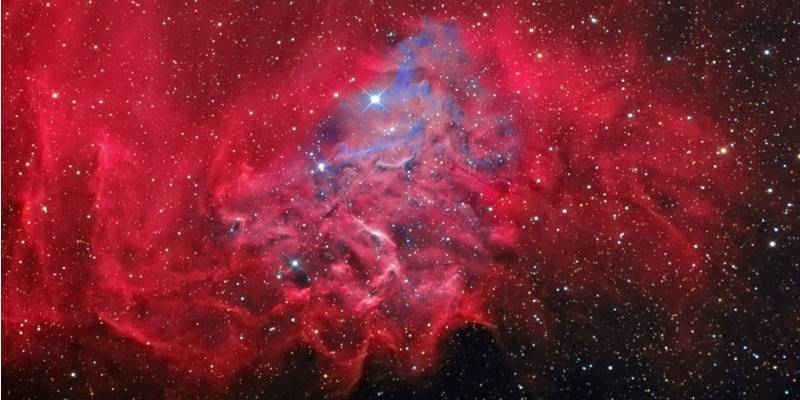
If you are interested in astronomy, space and universe news you can read these here. We have several news sources like:
- NASA - Published Content
- NASA Image of the Day
- Astronomy.com - Astronomy News
- Sky & Telescope - Astronomy News
- ScienceDaily - Astronomy News
Select below the tab of the source news that you are interested in, or take a look to every source.
NASA - Published Content
- NASA Astronaut Jonny Kim to Discuss Eight-Month Space Station Mission
12 December 2025, 9:28 pmNASA astronaut Jonny Kim will recap his recent mission aboard the International Space Station during a news conference at 3:30 p.m. EST Friday, Dec. 19, from the agency’s Johnson Space Center in Houston. Watch the news conference live on NASA’s YouTube channel. Learn how to stream NASA content through a variety of online platforms, including […] - NASA’s Webb, Curiosity Named in TIME’s Best Inventions Hall of Fame
12 December 2025, 6:52 pmTwo icons of discovery, NASA’s James Webb Space Telescope and NASA’s Curiosity rover, have earned places in TIME’s “Best Inventions Hall of Fame,” which recognizes the 25 groundbreaking inventions of the past quarter century that have had the most global impact, since TIME began its annual Best Inventions list in 2000. The inventions are celebrated […] - A Rare Gourd
12 December 2025, 4:18 pmNASA’s Hubble Space Telescope captured an uncommon sight – the death of a low-mass star – in this image of the Calabash Nebula released on Feb. 3, 2017. Here, we can see the star going through a rapid transformation from a red giant to a planetary nebula, during which it blows its outer layers of […] - NASA Announces Plan to Map Milky Way With Roman Space Telescope
12 December 2025, 4:00 pm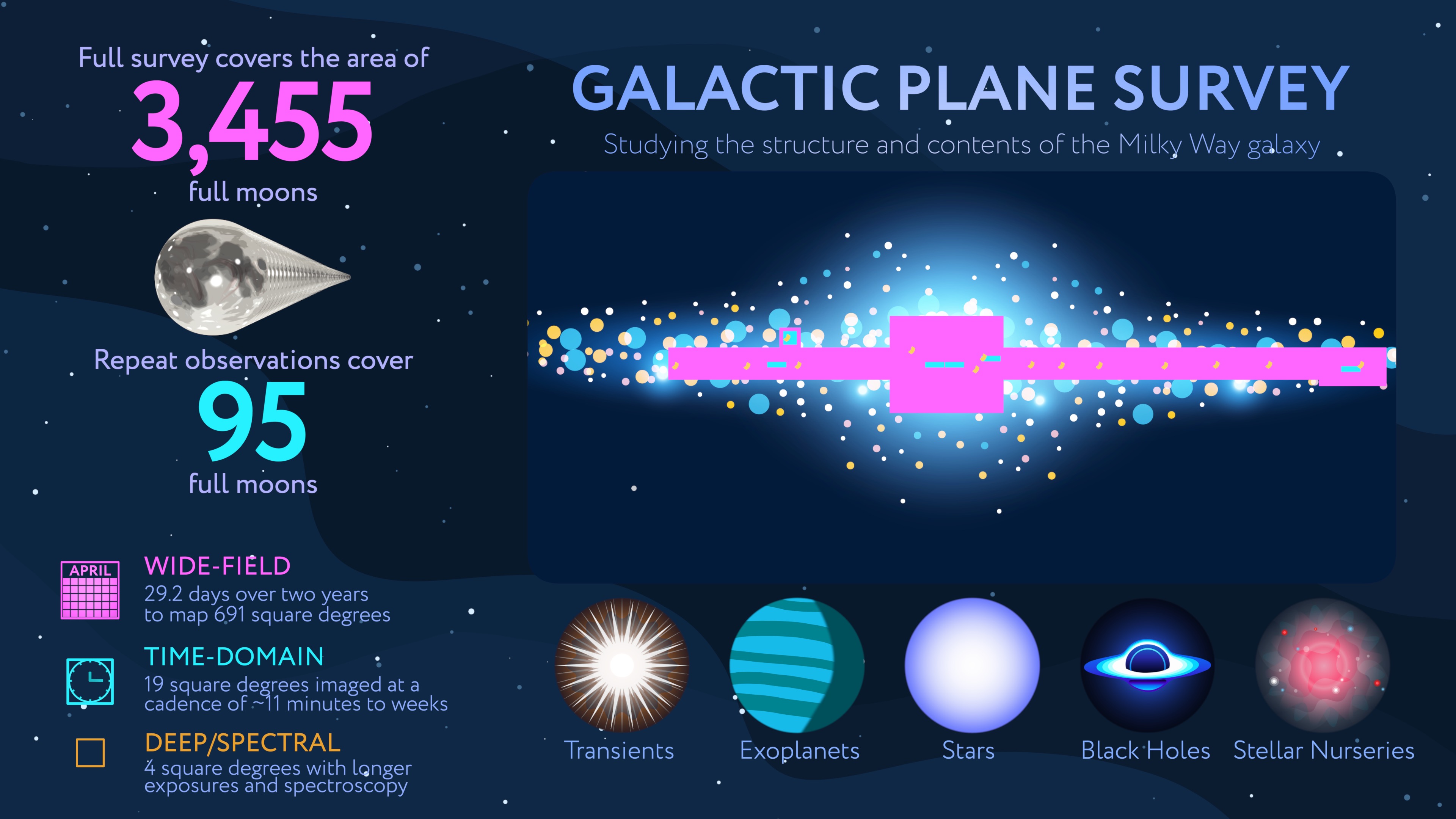 NASA’s Nancy Grace Roman Space Telescope team has released detailed plans for a major survey that will reveal our home galaxy, the Milky Way, in unprecedented detail. In one month of observations spread across two years, the survey will unveil tens of billions of stars and explore previously uncharted structures. “The Galactic Plane Survey will […]
NASA’s Nancy Grace Roman Space Telescope team has released detailed plans for a major survey that will reveal our home galaxy, the Milky Way, in unprecedented detail. In one month of observations spread across two years, the survey will unveil tens of billions of stars and explore previously uncharted structures. “The Galactic Plane Survey will […] - Massive Stars Make Their Mark in Hubble Image
12 December 2025, 1:00 pmThis NASA/ESA Hubble Space Telescope image features a glittering blue dwarf galaxy called Markarian 178 (Mrk 178). The galaxy, which is substantially smaller than our own Milky Way, lies 13 million light-years away in the constellation Ursa Major (the Great Bear). Mrk 178 is one of more than 1,500 Markarian galaxies. These galaxies get their […] - Pacific Moisture Drenches the U.S. Northwest
12 December 2025, 6:00 amA potent atmospheric river delivered intense rainfall to western Washington, triggering flooding and mudslides. - NASA Selects Two Heliophysics Missions for Continued Development
11 December 2025, 10:18 pmNASA has selected one small explorer mission concept to advance toward flight design and another for an extended period of concept development. NASA’s Science Mission Directorate Science Management Council selected CINEMA (Cross-scale Investigation of Earth’s Magnetotail and Aurora) to enter Phase B of development, which includes planning and design for flight and mission operations. The […] - NASA Works with Boeing, Other Collaborators Toward More Efficient Global Flights
11 December 2025, 8:00 pmPicture this: You’re just about done with a transoceanic flight, and the tracker in your seat-back screen shows you approaching your destination airport. And then … you notice your plane is moving away. Pretty far away. You approach again and again, only to realize you’re on a long, circling loop that can last an hour […] - NASA’s Chandra Finds Small Galaxies May Buck the Black Hole Trend
11 December 2025, 7:51 pmMost smaller galaxies may not have supermassive black holes in their centers, according to a recent study using NASA’s Chandra X-ray Observatory. This contrasts with the common idea that nearly every galaxy has one of these giant black holes within their cores, as NASA leads the world in exploring how our universe works. A team […] - NASA’s Parker Solar Probe Spies Solar Wind ‘U-Turn’
11 December 2025, 5:06 pmImages captured by NASA’s Parker Solar Probe as the spacecraft made its record-breaking closest approach to the Sun in December 2024 have now revealed new details about how solar magnetic fields responsible for space weather escape from the Sun — and how sometimes they don’t. Like a toddler, our Sun occasionally has disruptive outbursts. But […]
NASA Image of the Day
- The Calabash clash
12 December 2025, 4:20 pm The Calabash Nebula, pictured here — which has the technical name OH 231.8+04.2 — is a spectacular example of the death of a low-mass star like the Sun. This image taken by the NASA/ESA Hubble Space Telescope shows the star going through a rapid transformation from a red giant to a planetary nebula, during which it blows its outer layers of gas and dust out into the surrounding space. The recently ejected material is spat out in opposite directions with immense speed — the gas shown in yellow is moving close to a million kilometres an hour. Astronomers rarely capture a star in this phase of its evolution because it occurs within the blink of an eye — in astronomical terms. Over the next thousand years the nebula is expected to evolve into a fully fledged planetary nebula. The nebula is also known as the Rotten Egg Nebula because it contains a lot of sulphur, an element that, when combined with other elements, smells like a rotten egg — but luckily, it resides over 5000 light-years away in the constellation of Puppis (The Poop deck).
The Calabash Nebula, pictured here — which has the technical name OH 231.8+04.2 — is a spectacular example of the death of a low-mass star like the Sun. This image taken by the NASA/ESA Hubble Space Telescope shows the star going through a rapid transformation from a red giant to a planetary nebula, during which it blows its outer layers of gas and dust out into the surrounding space. The recently ejected material is spat out in opposite directions with immense speed — the gas shown in yellow is moving close to a million kilometres an hour. Astronomers rarely capture a star in this phase of its evolution because it occurs within the blink of an eye — in astronomical terms. Over the next thousand years the nebula is expected to evolve into a fully fledged planetary nebula. The nebula is also known as the Rotten Egg Nebula because it contains a lot of sulphur, an element that, when combined with other elements, smells like a rotten egg — but luckily, it resides over 5000 light-years away in the constellation of Puppis (The Poop deck). - Stellar Jet
11 December 2025, 5:00 pm Webb’s image of the enormous stellar jet in Sh2-284 provides evidence that protostellar jets scale with the mass of their parent stars—the more massive the stellar engine driving the plasma, the larger the resulting jet.
Webb’s image of the enormous stellar jet in Sh2-284 provides evidence that protostellar jets scale with the mass of their parent stars—the more massive the stellar engine driving the plasma, the larger the resulting jet. - NASA Astronaut Jonny Kim Returns to Earth
10 December 2025, 5:03 pm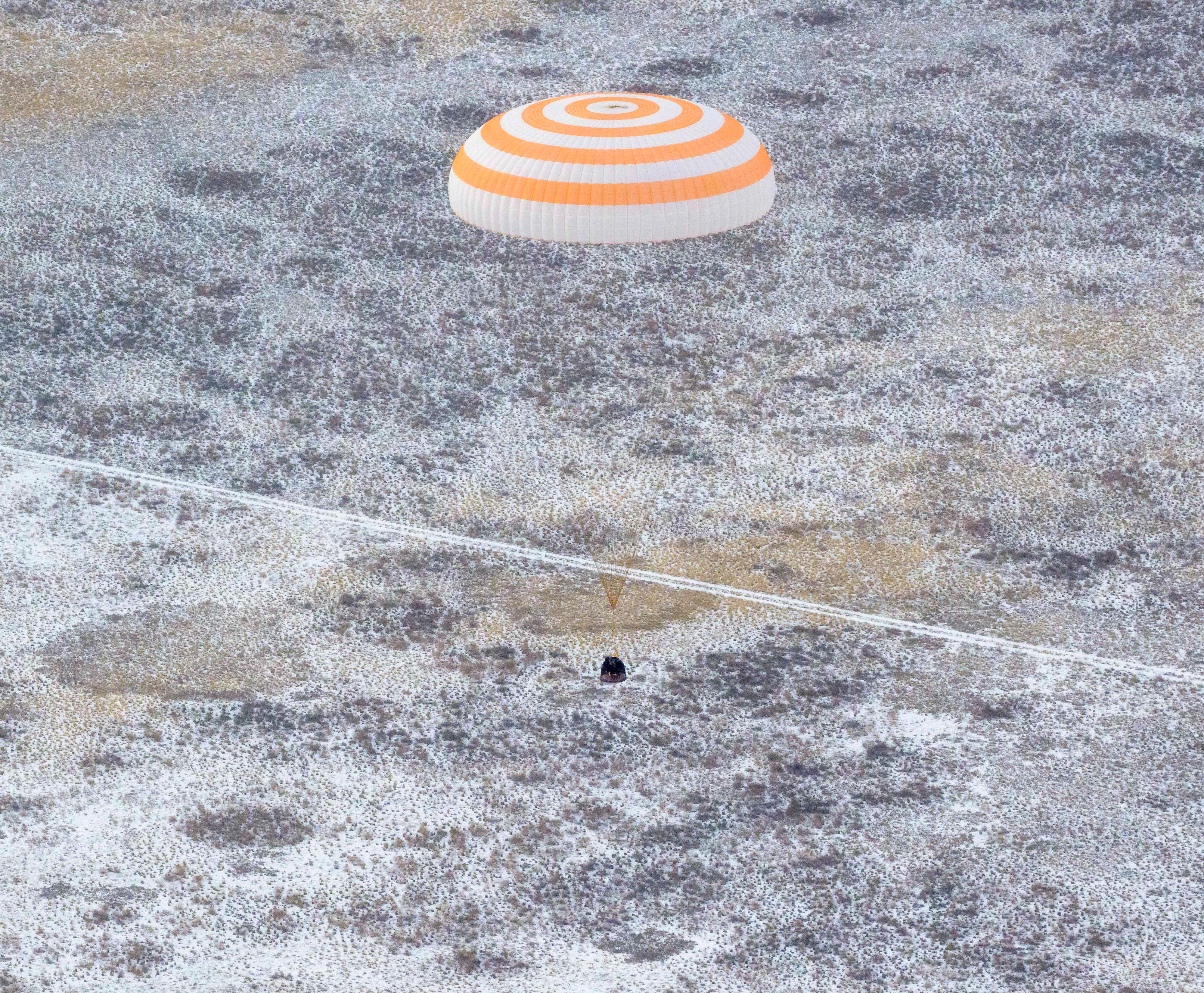 The Soyuz MS-27 spacecraft is seen as it lands in a remote area near the town of Zhezkazgan, Kazakhstan with Expedition 73 NASA astronaut Jonny Kim, and Roscosmos cosmonauts Sergey Ryzhikov and Alexey Zubritsky aboard, Tuesday, Dec. 9, 2025.
The Soyuz MS-27 spacecraft is seen as it lands in a remote area near the town of Zhezkazgan, Kazakhstan with Expedition 73 NASA astronaut Jonny Kim, and Roscosmos cosmonauts Sergey Ryzhikov and Alexey Zubritsky aboard, Tuesday, Dec. 9, 2025. - Sprites Over Château de Beynac
9 December 2025, 7:24 pm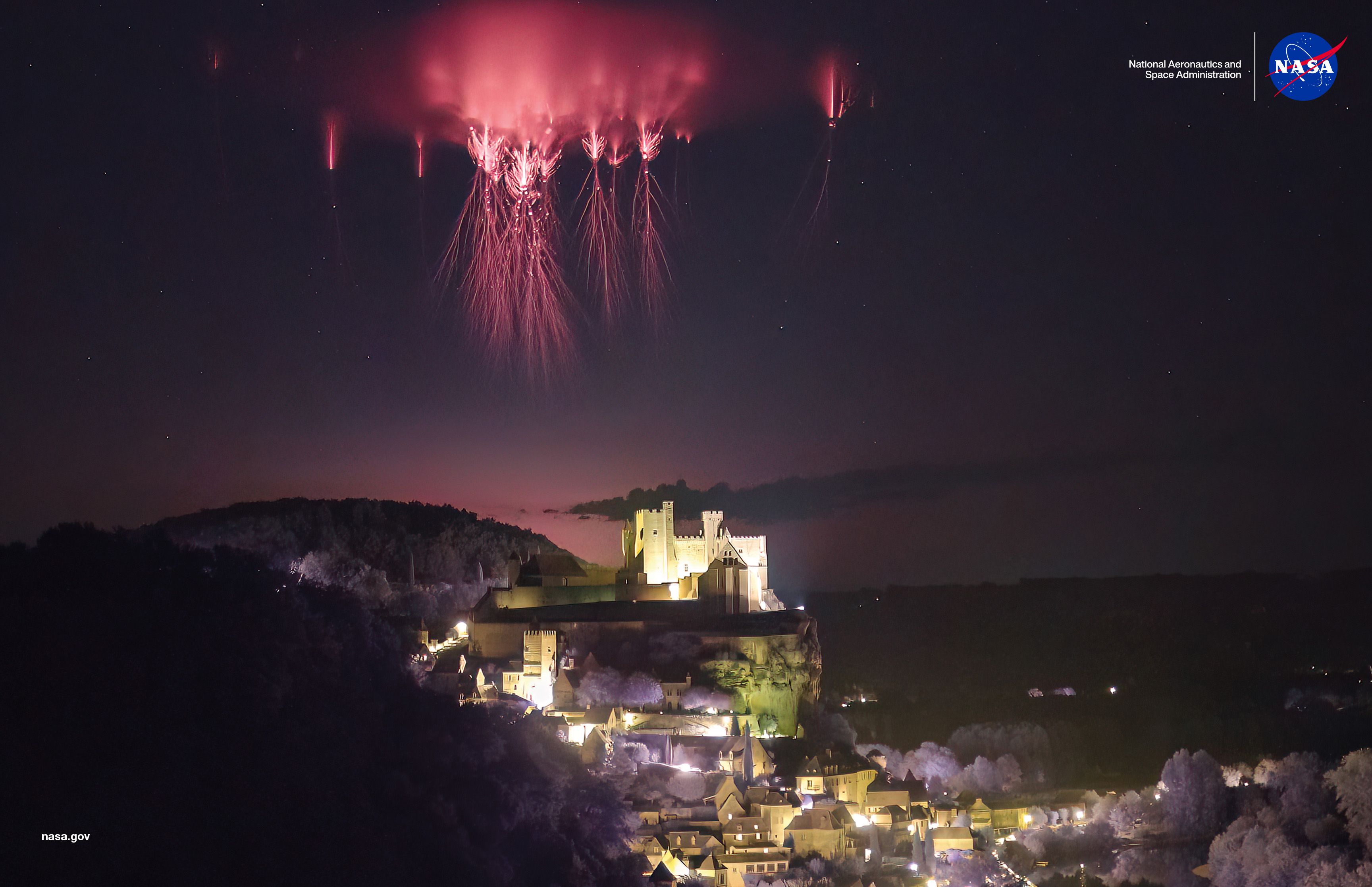 A flash of lightning, and then—something else. High above a storm, a crimson figure blinks in and out of existence. If you see it, you are a lucky witness of a sprite, one of the least-understood electrical phenomena in Earth’s upper atmosphere.
A flash of lightning, and then—something else. High above a storm, a crimson figure blinks in and out of existence. If you see it, you are a lucky witness of a sprite, one of the least-understood electrical phenomena in Earth’s upper atmosphere. - XRISM Finds Chlorine, Potassium in Cas A
8 December 2025, 7:08 pm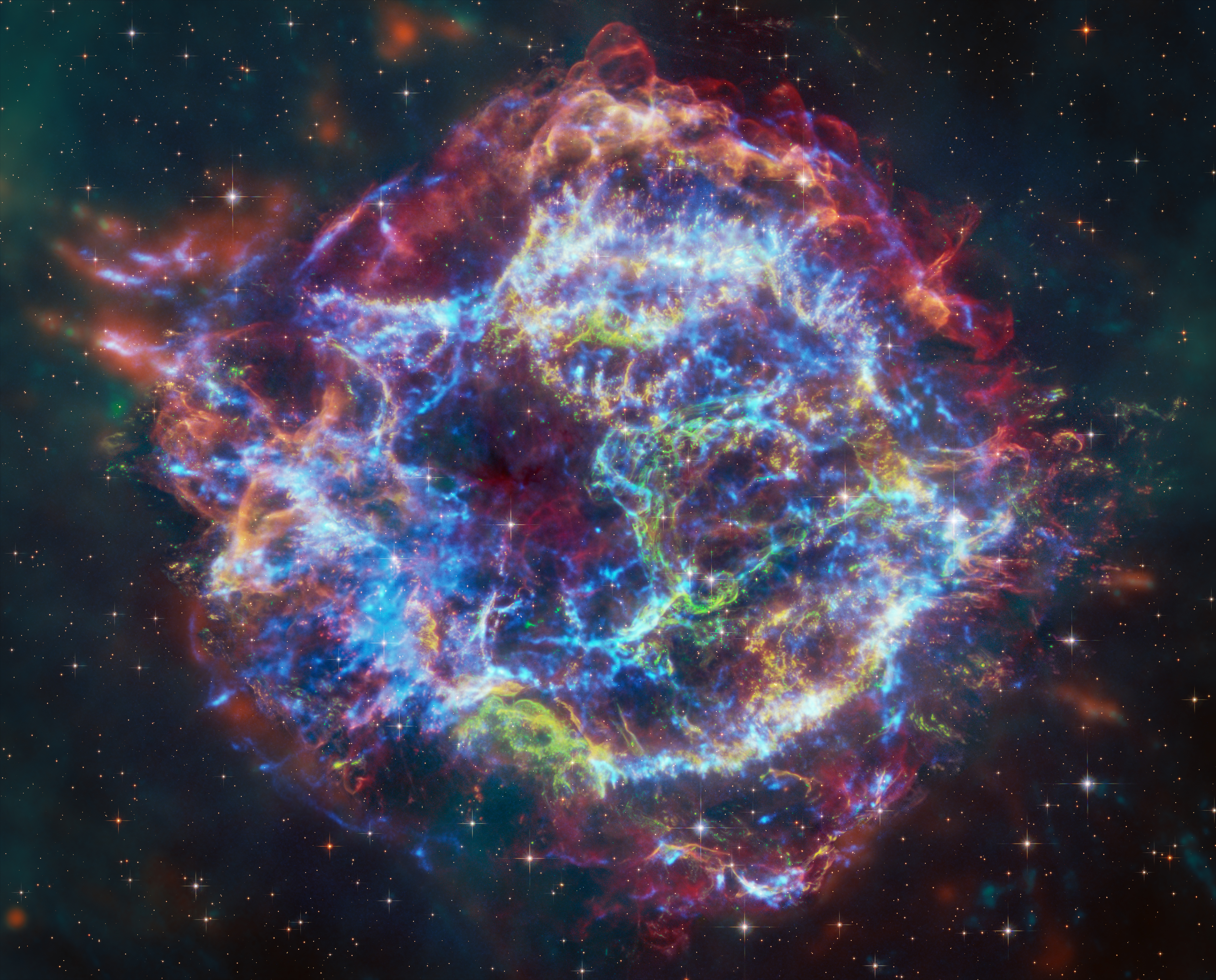 This composite image of the Cassiopeia A (or Cas A) supernova remnant, released Jan. 8, 2024, contains X-rays from Chandra (blue), infrared data from Webb (red, green, blue), and optical data from Hubble (red and white). A study by the XRISM (X-ray Imaging and Spectroscopy Mission) spacecraft has made the first-ever X-ray detections of chlorine and potassium in the wreckage.
This composite image of the Cassiopeia A (or Cas A) supernova remnant, released Jan. 8, 2024, contains X-rays from Chandra (blue), infrared data from Webb (red, green, blue), and optical data from Hubble (red and white). A study by the XRISM (X-ray Imaging and Spectroscopy Mission) spacecraft has made the first-ever X-ray detections of chlorine and potassium in the wreckage. - Testing Drones for Mars in the Mojave Desert
5 December 2025, 5:24 pm Researchers from NASA's Jet Propulsion Laboratory in Southern California monitor a research drone in the Dumont Dunes area of the Mojave Desert in September 2025 as part of a test campaign to develop navigation software to guide future rotorcraft on Mars.
Researchers from NASA's Jet Propulsion Laboratory in Southern California monitor a research drone in the Dumont Dunes area of the Mojave Desert in September 2025 as part of a test campaign to develop navigation software to guide future rotorcraft on Mars. - NASA’s Nancy Grace Roman Space Telescope Completed
4 December 2025, 6:41 pm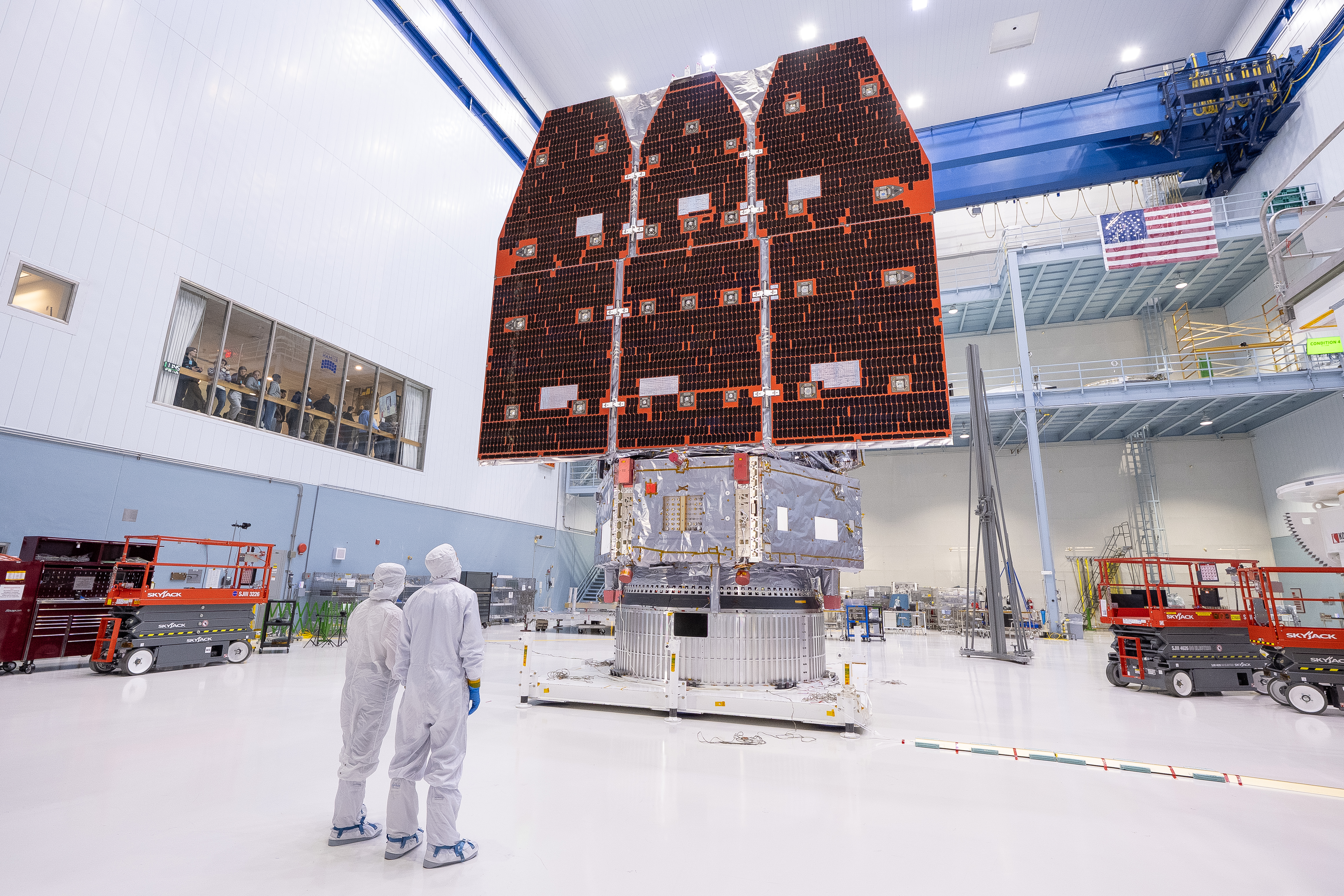 Over the course of several hours, technicians meticulously connected the inner and outer segments of NASA’s Nancy Grace Roman Space Telescope.
Over the course of several hours, technicians meticulously connected the inner and outer segments of NASA’s Nancy Grace Roman Space Telescope. - Hubble Seeks Clusters in ‘Lost Galaxy’
3 December 2025, 5:18 pm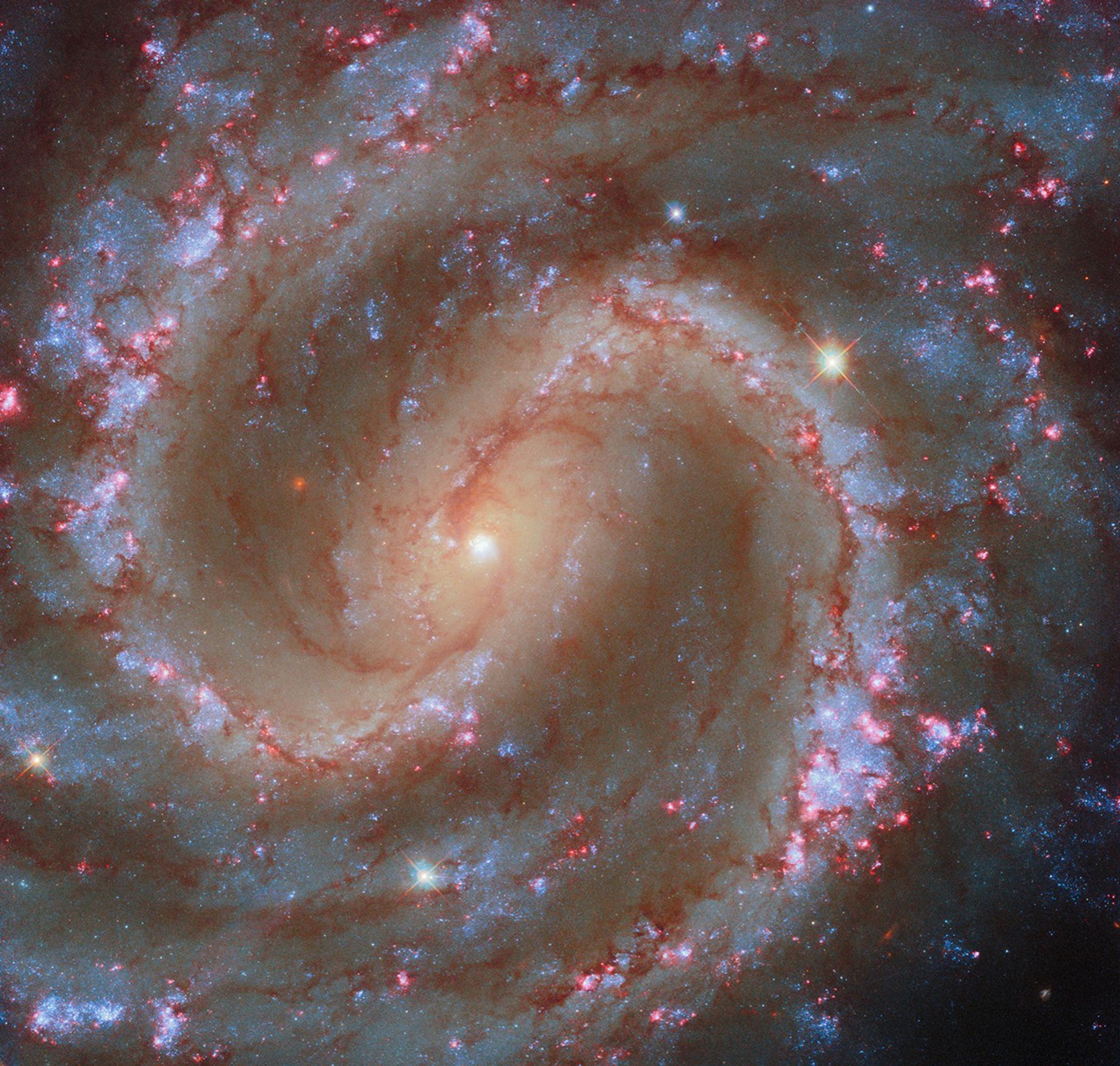 This NASA/ESA Hubble Space Telescope image features the spiral galaxy NGC 4535.
This NASA/ESA Hubble Space Telescope image features the spiral galaxy NGC 4535. - Waxing Gibbous Moon
2 December 2025, 6:34 pm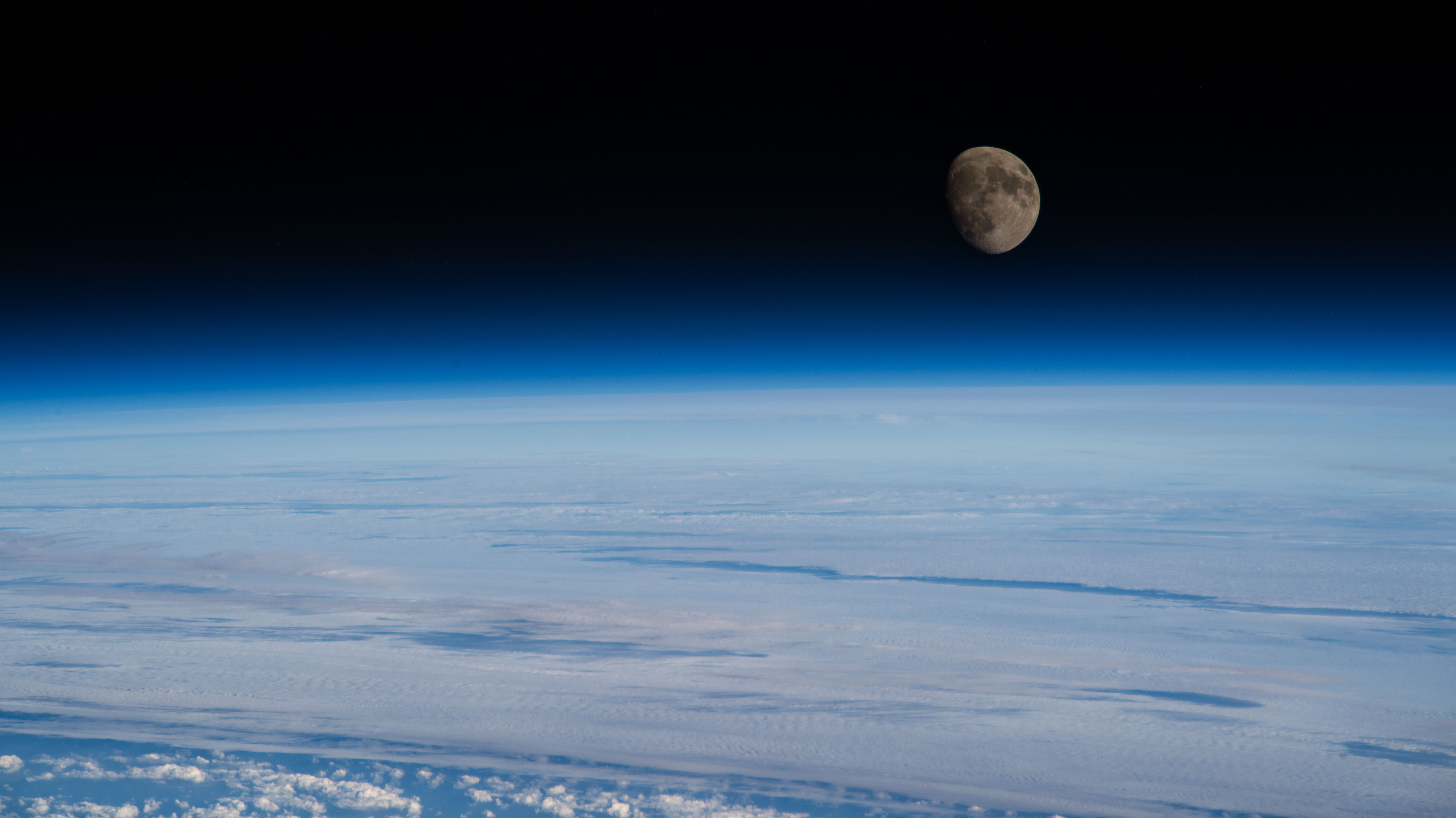 The waxing gibbous Moon rises above Earth’s blue atmosphere in this photograph taken from the International Space Station as it orbited 263 miles above a cloudy Atlantic Ocean off the coast of Quebec, Canada.
The waxing gibbous Moon rises above Earth’s blue atmosphere in this photograph taken from the International Space Station as it orbited 263 miles above a cloudy Atlantic Ocean off the coast of Quebec, Canada. - Sagittarius B2 Molecular Cloud
1 December 2025, 6:45 pm NASA's James Webb Space Telescope took a look at the Sagittarius B2 molecular cloud, the most massive, and active star-forming region in our galaxy, located only a few hundred light years from our central supermassive black hole.
NASA's James Webb Space Telescope took a look at the Sagittarius B2 molecular cloud, the most massive, and active star-forming region in our galaxy, located only a few hundred light years from our central supermassive black hole. - Newly Found Organics in Enceladus’ Plumes
28 November 2025, 7:13 pm NASA's Cassini spacecraft captured dramatic plumes, both large and small, spray water ice out from many locations along the famed 'tiger stripes' near the south pole of Saturn's moon Enceladus.
NASA's Cassini spacecraft captured dramatic plumes, both large and small, spray water ice out from many locations along the famed 'tiger stripes' near the south pole of Saturn's moon Enceladus. - Artemis II Orion Spacecraft Stacked
26 November 2025, 6:42 pm NASA’s Artemis II Orion spacecraft with its launch abort system is stacked atop the agency’s SLS (Space Launch System) rocket in High Bay 3 of the Vehicle Assembly Building at NASA’s Kennedy Space Center in Florida on Monday, Oct. 20, 2025. The spacecraft will carry NASA astronauts Reid Wiseman, Victor Glover, Christina Koch, and CSA (Canadian Space Agency) astronaut Jeremy Hansen on a 10-day mission around the Moon and back in early 2026.
NASA’s Artemis II Orion spacecraft with its launch abort system is stacked atop the agency’s SLS (Space Launch System) rocket in High Bay 3 of the Vehicle Assembly Building at NASA’s Kennedy Space Center in Florida on Monday, Oct. 20, 2025. The spacecraft will carry NASA astronauts Reid Wiseman, Victor Glover, Christina Koch, and CSA (Canadian Space Agency) astronaut Jeremy Hansen on a 10-day mission around the Moon and back in early 2026. - Red Spider Nebula
25 November 2025, 7:10 pm Using its Near-InfraRed Camera (NIRCam), NASA's James Webb Space Telescope has revealed never-before-seen details in the picturesque Red Spider Nebula with a rich backdrop of thousands of stars.
Using its Near-InfraRed Camera (NIRCam), NASA's James Webb Space Telescope has revealed never-before-seen details in the picturesque Red Spider Nebula with a rich backdrop of thousands of stars. - City Lights and Atmospheric Glow
24 November 2025, 6:13 pm The atmospheric glow blankets southern Europe and the northwestern Mediterranean coast, outlined by city lights. At left, the Po Valley urban corridor in Italy shines with the metropolitan areas of Milan and Turin and their surrounding suburbs.
The atmospheric glow blankets southern Europe and the northwestern Mediterranean coast, outlined by city lights. At left, the Po Valley urban corridor in Italy shines with the metropolitan areas of Milan and Turin and their surrounding suburbs. - Hubble Captures Puzzling Galaxy
21 November 2025, 6:29 pm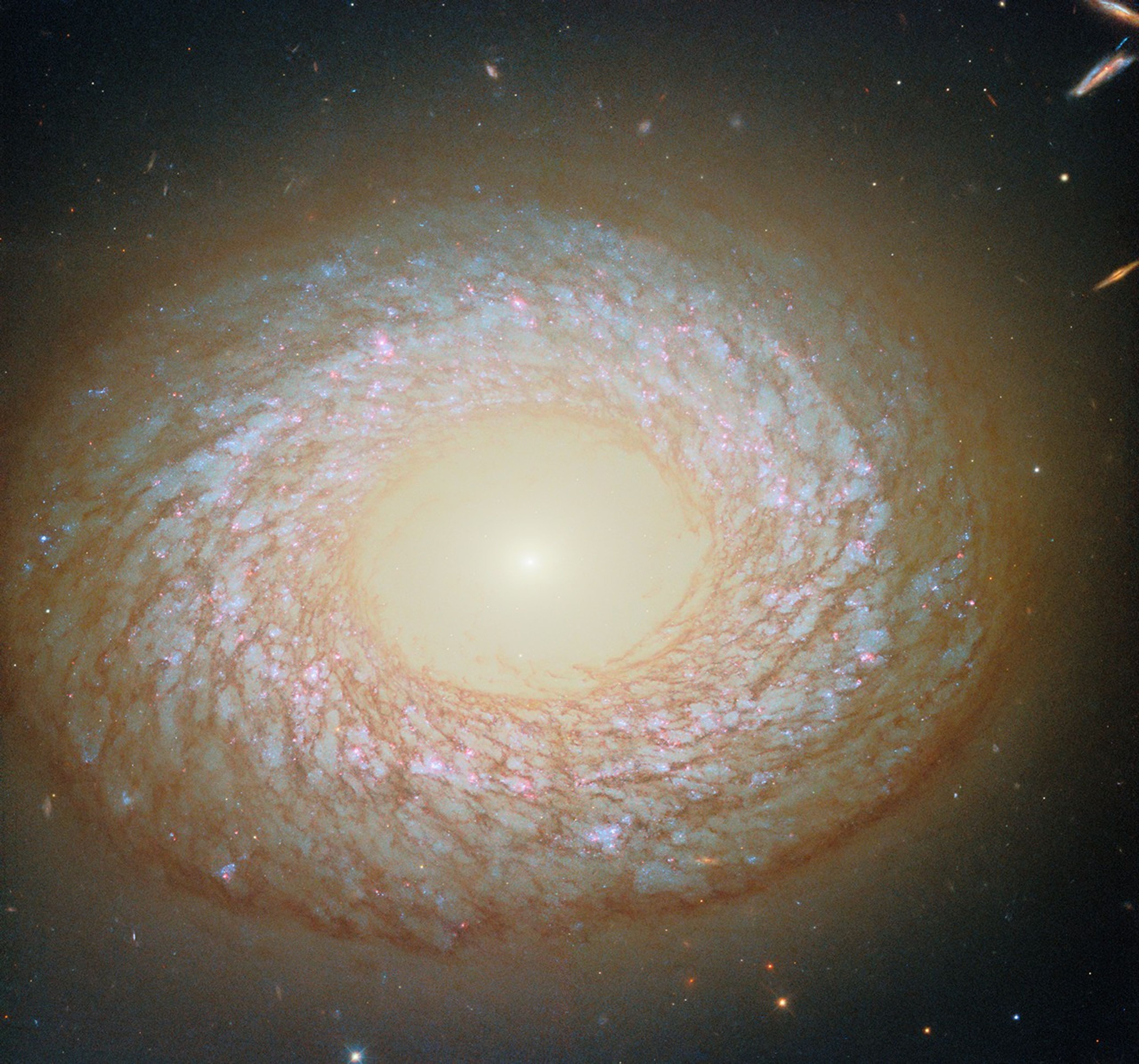 This NASA/ESA Hubble Space Telescope image features a galaxy, NGC 2775, that’s hard to categorize.
This NASA/ESA Hubble Space Telescope image features a galaxy, NGC 2775, that’s hard to categorize.
Astronomy.com
- East of the Lagoon
12 December 2025, 3:40 pmMark Hanson/Warren Keller Located 5,000 light-years away, the billowing star-forming region NGC 6559 (lower right) lies less than a degree east of the more frequently photographed Lagoon Nebula (M8). It is accompanied by the emission nebula IC 4685 (center), which itself is threaded by the dark nebulae Barnard 302/3, appearing to some like a dragonContinue reading "East of the Lagoon"
The post East of the Lagoon appeared first on Astronomy Magazine.
- 2025 Full Moon calendar: When to see the Full Moon and phases
12 December 2025, 3:31 pmThe phenomenon of a Full Moon arises when our planet, Earth, is precisely sandwiched between the Sun and the Moon. This alignment ensures the entire side of the Moon that faces us gleams under sunlight. Thanks to the Moon’s orbit around Earth, the angle of sunlight hitting the lunar surface and being reflected back toContinue reading "2025 Full Moon calendar: When to see the Full Moon and phases"
The post 2025 Full Moon calendar: When to see the Full Moon and phases appeared first on Astronomy Magazine.
- Dec. 12, 1921: The death of Henrietta Swan Leavitt
12 December 2025, 3:00 pmBorn in Massachusetts on July 4, 1868, Henrietta Swan Leavitt attended the country’s first co-ed college, Oberlin, before completing her degree at the Society for Collegiate Instruction of Women (today, Radcliffe College). She studied astronomy only in her last year of school. But after she volunteered for a period at the Harvard College Observatory (HCO),Continue reading "Dec. 12, 1921: The death of Henrietta Swan Leavitt"
The post Dec. 12, 1921: The death of Henrietta Swan Leavitt appeared first on Astronomy Magazine.
- The Sky Today on Friday, December 12: Comet Schaumasse visits some galaxies
12 December 2025, 10:00 amLooking for a sky event this week? Check out our full Sky This Week column. December 11: Visit the Orion Nebula The Geminids are coming! Peaking on the 14th, this annual shower is likely already causing an increase over the random rate of meteors we see all year round, so keep an eye on the skies thisContinue reading "The Sky Today on Friday, December 12: Comet Schaumasse visits some galaxies"
The post The Sky Today on Friday, December 12: Comet Schaumasse visits some galaxies appeared first on Astronomy Magazine.
- The Sky This Week from December 12 to 19: The Geminids peak
12 December 2025, 7:00 amSky This Week is brought to you in part by Celestron. Friday, December 12Ganymede reappears from occultation behind Jupiter overnight tonight, late on the 12th in the western U.S. and early on the 13th for those in the eastern half of the country. Jupiter rises around 7 P.M. local time, located in eastern Gemini. ShiningContinue reading "The Sky This Week from December 12 to 19: The Geminids peak"
The post The Sky This Week from December 12 to 19: The Geminids peak appeared first on Astronomy Magazine.
- Don’t miss the Geminid meteor shower
11 December 2025, 8:34 pmThe annual Geminid meteor shower, whose peak occurs on the night of December 13, usually puts on a great show. Occurring less than a month after the Leonid meteor shower, the Geminid shower generally produces the brightest meteors of the year. In 2025, the Moon will be a waning crescent, so its light won’t affectContinue reading "Don’t miss the Geminid meteor shower"
The post Don’t miss the Geminid meteor shower appeared first on Astronomy Magazine.
- A Subaru Telescope program finds two distant new objects
11 December 2025, 5:21 pmAn international team of astronomers using the Subaru Telescope in Hawaiʻi have discovered a massive planet and a brown dwarf orbiting distant stars. Their results were published in an article that appeared in The Astronomical Journal. The discoveries are the first results from OASIS (Observing Accelerators with SCExAO Imaging Survey), whose purpose is to find andContinue reading "A Subaru Telescope program finds two distant new objects"
The post A Subaru Telescope program finds two distant new objects appeared first on Astronomy Magazine.
- Dec. 11, 2006: Discovery docks with the ISS
11 December 2025, 3:00 pmWhen the seven astronauts of the STS-116 mission lifted off in Space Shuttle Discovery on Dec. 9, 2006, they were setting off on what NASA would call “one of the most complex missions ever to the International Space Station.” The crew docked with the ISS on Dec. 11, 2006, and began an extensive rewiring project,Continue reading "Dec. 11, 2006: Discovery docks with the ISS"
The post Dec. 11, 2006: Discovery docks with the ISS appeared first on Astronomy Magazine.
- The cosmic ocean’s glow
11 December 2025, 2:54 pmOleg Bouevitch from Nepean, Ontario, Canada The Milky Way and its dense star fields and dust lanes arch over bioluminescent surf off Frank Island in British Columbia. The image combines two 30-second sky exposures at ISO 1600 and a 1-second ISO 16000 foreground frame to capture the glow of microorganisms in the breaking surf, shotContinue reading "The cosmic ocean’s glow"
The post The cosmic ocean’s glow appeared first on Astronomy Magazine.
- The Sky Today on Thursday, December 11: Visit the Orion Nebula
11 December 2025, 10:00 amLooking for a sky event this week? Check out our full Sky This Week column. December 10: Spot Neptune With no Moon in the evening sky, let’s visit a favorite gem that’s now well above the horizon in the few hours leading up to midnight: the Orion Nebula (M42). Hanging below the easily recognized belt of Orion,Continue reading "The Sky Today on Thursday, December 11: Visit the Orion Nebula"
The post The Sky Today on Thursday, December 11: Visit the Orion Nebula appeared first on Astronomy Magazine.
Sky & Telescope
- Geminid Meteor Shower Peaks December 13-14
12 December 2025, 3:35 pmGreat news! We'll have dark skies for the year's richest meteor shower.
The post Geminid Meteor Shower Peaks December 13-14 appeared first on Sky & Telescope.
- This Week's Sky at a Glance, December 12 – 21
12 December 2025, 11:06 amBig Jupiter now rises in the east-southeast less than an hour after dark. It's high in sharp telescopic viewing by about 10 p.m.
The post This Week's Sky at a Glance, December 12 – 21 appeared first on Sky & Telescope.
- Webb’s First Look at TRAPPIST-1e Hints at a Titan-like Atmosphere
11 December 2025, 9:34 pmObservations from the James Webb Space Telescope suggest the planet might have a nitrogen-and-methane atmosphere — but more data are needed to rule out a bare rock scenario.
The post Webb’s First Look at TRAPPIST-1e Hints at a Titan-like Atmosphere appeared first on Sky & Telescope.
- Two Stars’ Swept by the Solar System 4.5 million Years Ago
11 December 2025, 5:56 pmTwo winter stars left their mark long ago on wispy gas clouds near the solar system. Their passage might even have influenced life on Earth.
The post Two Stars’ Swept by the Solar System 4.5 million Years Ago appeared first on Sky & Telescope.
- Galaxies Spin on Vast Filament Like a Teacup Ride
9 December 2025, 4:37 pmAstronomers have discovered one of the largest structures in the universe — and the galaxies within it — spinning like a fairground teacup ride.
The post Galaxies Spin on Vast Filament Like a Teacup Ride appeared first on Sky & Telescope.
- The Sun's Poles Are Different Than We Expected
5 December 2025, 2:00 pmA new analysis of the Solar Orbiter's unique views of the Sun's poles shows how a "conveyor belt" moves within our nearest star.
The post The Sun's Poles Are Different Than We Expected appeared first on Sky & Telescope.
- This Week's Sky at a Glance, December 5 – 14
5 December 2025, 10:37 amThe Moon, waning away from full, groups up with Jupiter, Castor and Pollux on two nights. Later in the week the Geminid meteor shower comes into full bloom.
The post This Week's Sky at a Glance, December 5 – 14 appeared first on Sky & Telescope.
- The Solar and Heliospheric Observatory Celebrates 30 Years in Space
4 December 2025, 8:52 pmThe groundbreaking mission designed to observe our Sun and its interactions with Earth celebrates three decades in space this week.
The post The Solar and Heliospheric Observatory Celebrates 30 Years in Space appeared first on Sky & Telescope.
- Boosting the Gravitational Wave Background
3 December 2025, 7:24 pmWhy is the gravitational-wave background — the hum made by supermassive black holes colliding across the universe — stronger than expected?
The post Boosting the Gravitational Wave Background appeared first on Sky & Telescope.
- Tiny Sparks of Lightning Detected on Mars for the First Time
2 December 2025, 4:29 pmThe microphone on NASA's Perseverance rover unexpectedly heard tiny claps of thunder from sparks caused by colliding dust grains.
The post Tiny Sparks of Lightning Detected on Mars for the First Time appeared first on Sky & Telescope.
ScienceDaily
- Ghost particles slip through Earth and spark a hidden atomic reaction
12 December 2025, 12:53 pmScientists have managed to observe solar neutrinos carrying out a rare atomic transformation deep underground, converting carbon-13 into nitrogen-13 inside the SNO+ detector. By tracking two faint flashes of light separated by several minutes, researchers confirmed one of the lowest-energy neutrino interactions ever detected. - A nearby Earth-size planet just got much more mysterious
12 December 2025, 12:22 pmTRAPPIST-1e, an Earth-sized world in the system’s habitable zone, is drawing scientific attention as researchers hunt for signs of an atmosphere—and potentially life-supporting conditions. Early James Webb observations hint at methane, but the signals may instead come from the star itself, a small ultracool M dwarf whose atmospheric behavior complicates interpretation. - Uranus and Neptune are hiding something big beneath the blue
10 December 2025, 4:50 pmUranus and Neptune may not be the icy worlds we’ve long imagined. A new Swiss-led study uses innovative hybrid modeling to reveal that these planets could just as easily be dominated by rock as by water-rich ices. The findings also help explain their bizarre, multi-poled magnetic fields and open the door to a wider range of possible interior structures. But major uncertainties remain, and only future space missions will be able to uncover what truly lies beneath their blue atmospheres. - James Webb catches a giant helium cloud pouring off a puffy planet
10 December 2025, 8:10 amAstronomers using the James Webb Space Telescope have captured dramatic helium streams pouring off the super-puff exoplanet WASP-107b, revealing a world with an enormously inflated, weakly bound atmosphere under intense stellar heat. The detection of helium, water, and various chemical compounds—alongside the surprising absence of methane—paints a picture of a planet that formed far from its star but later migrated inward, where scorching radiation now strips its gases into space. - New cosmic lens measurements deepen the Hubble tension mystery
9 December 2025, 3:26 pmScientists are testing a novel way to measure cosmic expansion using time delays in gravitationally lensed quasars. Their results match “local” measurements but clash with early-universe estimates, strengthening the mysterious Hubble tension. This mismatch could point to new physics rather than observational error. Researchers now aim to boost precision to solve the puzzle. - Astronomers capture sudden black hole blast firing ultra fast winds
9 December 2025, 3:02 pmA sudden X-ray flare from a supermassive black hole in galaxy NGC 3783 triggered ultra-fast winds racing outward at a fifth the speed of light—an event never witnessed before. Using XMM-Newton and XRISM, astronomers caught the blast unfold in real time, revealing how tangled magnetic fields can rapidly “untwist” and hurl matter into space much like an enormous, cosmic-scale version of the Sun’s coronal mass ejections. - This surprising discovery rewrites the Milky Way’s origin story
9 December 2025, 2:23 pmNew simulations of Milky Way-like galaxies reveal that the strange split between two chemically distinct groups of stars may arise from several very different evolutionary events. Bursts of star formation, shifts in flowing gas, and even streams of metal-poor material from a galaxy’s outskirts can all create this double pattern. The findings challenge the long-held assumption that a major ancient collision caused the split. - A cosmic collision reveals how black holes really behave
8 December 2025, 5:52 pmA remarkably clean gravitational-wave detection has confirmed long-standing predictions about black holes, including Hawking’s area theorem and Einstein’s ringdown behavior. The findings also provide the strongest support yet that real black holes follow the Kerr model. - A violent star explosion just revealed a hidden recipe for life
8 December 2025, 8:40 amXRISM’s high-precision X-ray data revealed unusually strong signatures of chlorine and potassium inside the Cassiopeia A supernova remnant. These levels are far higher than theoretical models predicted, showing that supernovae can be major sources of these life-critical elements. Researchers believe powerful mixing deep inside massive stars is responsible for the unexpected boost. The findings reshape our understanding of how the building blocks of planets and life were created. - Cosmic knots may finally explain why the Universe exists
7 December 2025, 1:31 pmKnotted structures once imagined by Lord Kelvin may actually have shaped the universe’s earliest moments, according to new research showing how two powerful symmetries could have created stable “cosmic knots” after the Big Bang. These exotic objects may have briefly dominated the young cosmos, unraveled through quantum tunneling, and produced heavy right-handed neutrinos whose decays tipped the balance toward matter over antimatter. - New moonquake discovery could change NASA’s Moon plans
7 December 2025, 9:15 amScientists have discovered that moonquakes, not meteoroids, are responsible for shifting terrain near the Apollo 17 landing site. Their analysis points to a still-active fault that has been generating quakes for millions of years. While the danger to short missions is low, long-term lunar bases could face increasing risk. The findings urge future planners to avoid building near scarps and to prioritize new seismic instruments. - Scientists are turning Earth into a giant detector for hidden forces shaping our Universe
6 December 2025, 4:02 pmSQUIRE aims to detect exotic spin-dependent interactions using quantum sensors deployed in space, where speed and environmental conditions vastly improve sensitivity. Orbiting sensors tap into Earth’s enormous natural polarized spin source and benefit from low-noise periodic signal modulation. A robust prototype with advanced noise suppression and radiation-hardened engineering now meets the requirements for space operation. The long-term goal is a powerful space-ground network capable of exploring dark matter and other beyond-Standard-Model phenomena. - SPHERE’s stunning space images reveal where new planets are forming
6 December 2025, 9:24 amSPHERE’s detailed images of dusty rings around young stars offer a rare glimpse into the hidden machinery of planet formation. These bright arcs and faint clouds reveal where tiny planet-building bodies collide, break apart, and reshape their systems. Some disks contain sharp edges or unusual patterns that hint at massive planets still waiting to be seen, while others resemble early versions of our own asteroid belt or Kuiper belt. Together, the images form one of the most complete views yet of how newborn solar systems evolve and where undiscovered worlds may be hiding. - Astronomers find a planet orbiting at a wild angle no one can explain
4 December 2025, 3:57 pmA network of powerful ground-based telescopes captured rare starspot-crossing events on TOI-3884b, revealing cooler patches on the star’s surface and rapid changes tied to its rotation. By combining multicolor transit observations with months of high-cadence brightness monitoring, researchers nailed down the star’s rotation period with impressive precision. These measurements allowed them to map the system’s geometry—and what they found was surprising: the planet's orbit is wildly tilted relative to the star’s spin. - Surprising optics breakthrough could transform our view of the Universe
4 December 2025, 6:41 amFROSTI is a new adaptive optics system that precisely corrects distortions in LIGO’s mirrors caused by extreme laser power. By using custom thermal patterns, it preserves mirror shape without introducing noise, allowing detectors to operate at higher sensitivities. This leap enables future observatories like Cosmic Explorer to see deeper into the cosmos. The technology lays the groundwork for vastly expanding gravitational-wave astronomy.